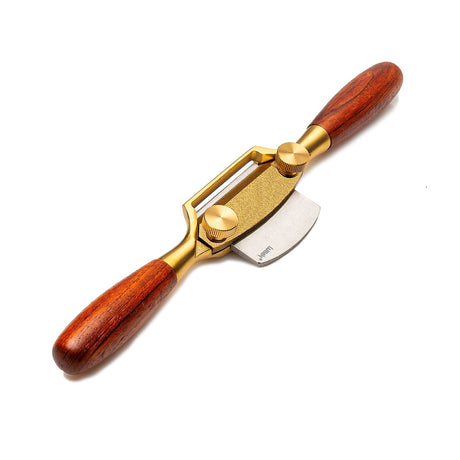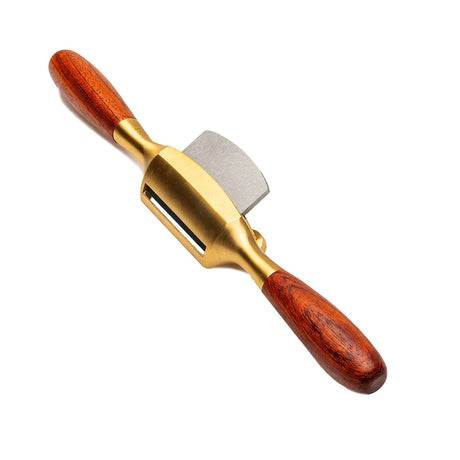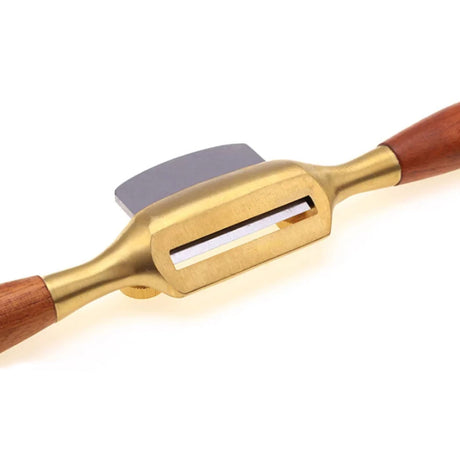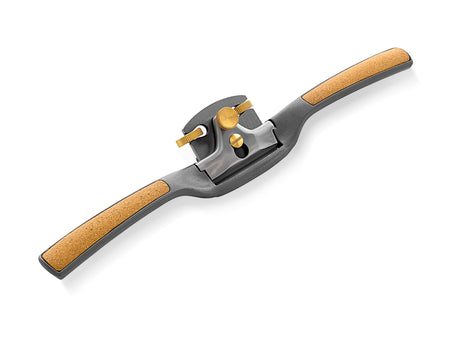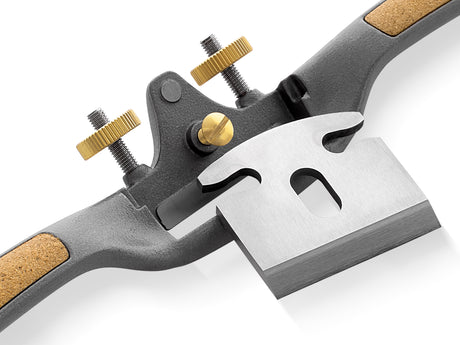Luban
Luban Round Sole Spokeshave Bronze Body Wooden Handles
$95.00Unit price /UnavailableIn stockLuban
Luban Flat Sole Spokeshave Cast Bronze Body Wooden Handles
$95.00Unit price /UnavailableIn stockMelbourne Tool Company
Melbourne Tool Company Flat Sole Spokeshave Ergonomic Handles HSS Blade
$135.00Unit price /UnavailableIn stockMelbourne Tool Company
Melbourne Tool Company Set of Two Flat & Round Sole Spokeshaves
$249.00$270.00Unit price /UnavailablePre-OrderLuban
Luban Flat Sole Spokeshave Cast Iron Body Wooden Handles
$84.90Unit price /UnavailableIn stockMelbourne Tool Company
Melbourne Tool Company Round Sole Spokeshave Ergonomic Handles HSS Blade
$135.00Unit price /UnavailableMelbourne Tool Company
Melbourne Tool Company Blade for Flat & Round Sole Spokeshaves
$35.00Unit price /UnavailableIn stockIronbark Toolworks
Ironbark Toolworks Spokeshave 10in Brass Body Mulga Handles with HSS Blade
$420.00Unit price /UnavailableVery low stock (4 units)Ironbark Toolworks
Ironbark Toolworks 16mm Round Sole Spokeshave with Angled Handles
$410.00Unit price /UnavailableVery low stock (3 units)
Mastering Curves and Fine Shaping with Spokeshaves
Spokeshaves are indispensable hand tools for shaping and smoothing curved surfaces in timber. With roots in traditional wheelwrighting and furniture making, these tools allow precise control when refining arcs, chamfers, and profiles on everything from chair legs and spindles to bows and tool handles. Their compact design and dual-handled grip enable fluid, responsive movement along both convex and concave forms.
Modern spokeshaves come in various forms—flat, round, concave, and convex—each tailored to a specific task. Flat-soled spokeshaves are excellent for gently curved or flat surfaces, while round-bottomed versions are ideal for hollowing and tight internal curves. Blades are typically bevel-down and set into a cast or ductile iron body, with fine adjustment knobs allowing micro-control of depth and blade alignment.
Spokeshaves shine in applications where sanding would be too aggressive or imprecise. With a sharp blade and well-tuned body, a spokeshave can leave a surface that is ready for finish straight from the tool. They’re especially valuable in green woodworking, lutherie, and chair making, where sculpted, ergonomic shapes demand sensitivity and finesse.
To get the best results, it's important to regularly hone the blade, adjust the mouth opening for fine or coarse work, and ensure the blade is evenly set. Mastery of spokeshaves not only elevates your craftsmanship but also offers a satisfying tactile experience as you carve wood into elegant, flowing forms with control and ease.
FAQs
What is a spokeshave used for?
A spokeshave is used to shape and smooth curved wood surfaces, particularly in furniture making, green woodworking, and shaping tool handles or bow staves.
What’s the difference between flat and round spokeshaves?
Flat spokeshaves have a straight sole and are suited to convex or gently curved surfaces. Round spokeshaves, with a curved sole, are used for hollowing or working concave curves.
How do I sharpen a spokeshave blade?
Remove the blade and hone the bevel side using a sharpening stone or jig. Maintain the factory angle (typically around 25°–30°) and finish with a strop for a razor-sharp edge.
Can spokeshaves be used on hardwood?
Yes, with a sharp blade and correct setup. For harder timbers, a narrower mouth and shallow cut help maintain control and reduce tear-out.
What materials are spokeshave bodies made from?
Most modern spokeshaves feature cast iron or ductile iron bodies for stability, though some traditional and specialty models may use brass or even hardwood for lightweight control.
Is a spokeshave difficult to use for beginners?
Not at all. With basic instruction and practice, beginners can quickly learn to control the tool. Proper blade setup and working with the grain are key to early success.
How do I adjust the depth of cut on a spokeshave?
Most spokeshaves have thumb screws or knurled adjusters that allow you to set the blade depth. Ensure both sides are evenly adjusted for a balanced, smooth shaving action.
Can I use a spokeshave instead of sanding?
In many cases, yes. A sharp spokeshave can produce a clean, finished surface, eliminating the need for sanding and preserving the crispness of details and grain definition.
Do I need more than one type of spokeshave?
If your work involves a variety of curves, owning both flat and round spokeshaves is recommended. Each excels in different shaping contexts and offers better results when matched to the task.

